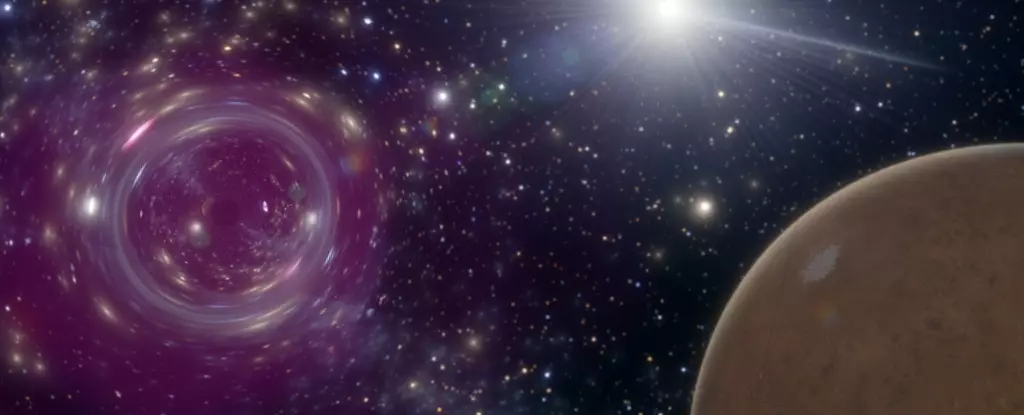In the quest to understand the universe and its enigmatic components, researchers have recently shed light on a surprising phenomenon: small primordial black holes (PBHs) may traverse our Solar System more frequently than previously thought. These ancient black holes, theoretically formed just seconds after the Big Bang from dense concentrations of matter, could provide crucial insights into dark matter and its behavior. While the concept may provoke curiosity and skepticism alike, the implications of these findings could reshape our understanding of cosmic dynamics.
Primordial black holes are a unique category of black holes that differ from those formed through stellar collapse. Their existence hinges on the circumstances of the early universe, where fluctuations in mass density allowed certain regions to collapse under their own gravity. Unlike the massive black holes typically found at the center of galaxies, PBHs can vary significantly in size, with some estimated to have masses comparable to asteroids yet existing within a volume significantly smaller than an atom. This anomaly positions PBHs as intriguing candidates for explaining dark matter, an invisible substance that does not emit light and is detectable primarily through its gravitational effects on visible matter.
Recent research has proposed that these elusive black holes might pass through the inner Solar System approximately once every decade. This estimate is grounded in calculations based on the distribution of dark matter throughout the cosmos, suggesting a rate of PBH encounters that could feasibly allow for detection. Although these black holes themselves are undetectable directly, their gravitational influence can be observed, particularly in the case of Mars. Interestingly, a PBH that comes within 450 million kilometers of the red planet could induce a measurable wobble in its orbit.
The study, led by astrophysicist Tung Tran from the Massachusetts Institute of Technology, utilized Mars as a focal point for potential detection of these gravitational disturbances. The research highlights that, even a minuscule shift of around 1 meter over a decade could be significant enough for advanced sensors to register changes in the planetary distance from Earth with high precision. The sensors currently operational can ascertain Mars’s distance to within an accuracy of about 10 centimeters. This capability presents a valuable opportunity to investigate the consequences of PBH flybys and contribute to broader astrophysical knowledge.
The inquiry into PBH interactions began with an imaginative, albeit theoretically unlikely, scenario: what would occur if a PBH passed close to a person? Tran’s calculations suggested an extreme result—if an individual encountered a PBH at a proximity of just one meter, the gravitational pull could launch them approximately six meters away in the blink of an eye. Although such a close encounter remains nearly impossible, the curiosity sparked by this scenario prompted researchers to consider the far-reaching effects of PBHs on various celestial bodies.
To expand on this, the study explored how PBH proximity might influence not only Mars but also planets like Mercury and Venus. Mars provided the clearest detectable signal due to the extensive monitoring efforts focused on the planet. However, this raised an essential question: if a PBH could cause such pronounced effects, wouldn’t traditional asteroids create similar disturbances in planetary orbits? While both PBHs and asteroids exert gravitational forces, the stark difference in velocity between the two objects hints at distinct interaction patterns that contribute differently to orbital wobble.
While this research opens a tantalizing door to possible discoveries, it is clear that further investigation is critical. Scientists acknowledge the complexity of the dynamics involved in PBH interactions and the need for more detailed simulations involving a larger number of celestial bodies. Understanding the typical behavior of asteroids—relatively slow movers on predictable paths—versus the rapid transit of primordial black holes could enhance our ability to distinguish between the two and facilitate the detection of a Martian wobble.
The study of primordial black holes represents a frontier in cosmic science that bridges the gap between theoretical physics and observational astronomy. With the potential for PBHs to interact with familiar celestial bodies like Mars, researchers may soon uncover invaluable insights into the composition of dark matter and the fundamental workings of our universe. By continuing to refine our understanding of these phenomena, we stand on the threshold of uncovering one of astrophysics’ most significant mysteries, offering a deeper appreciation for the intricate tapestry of space and time that surrounds us.


Leave a Reply